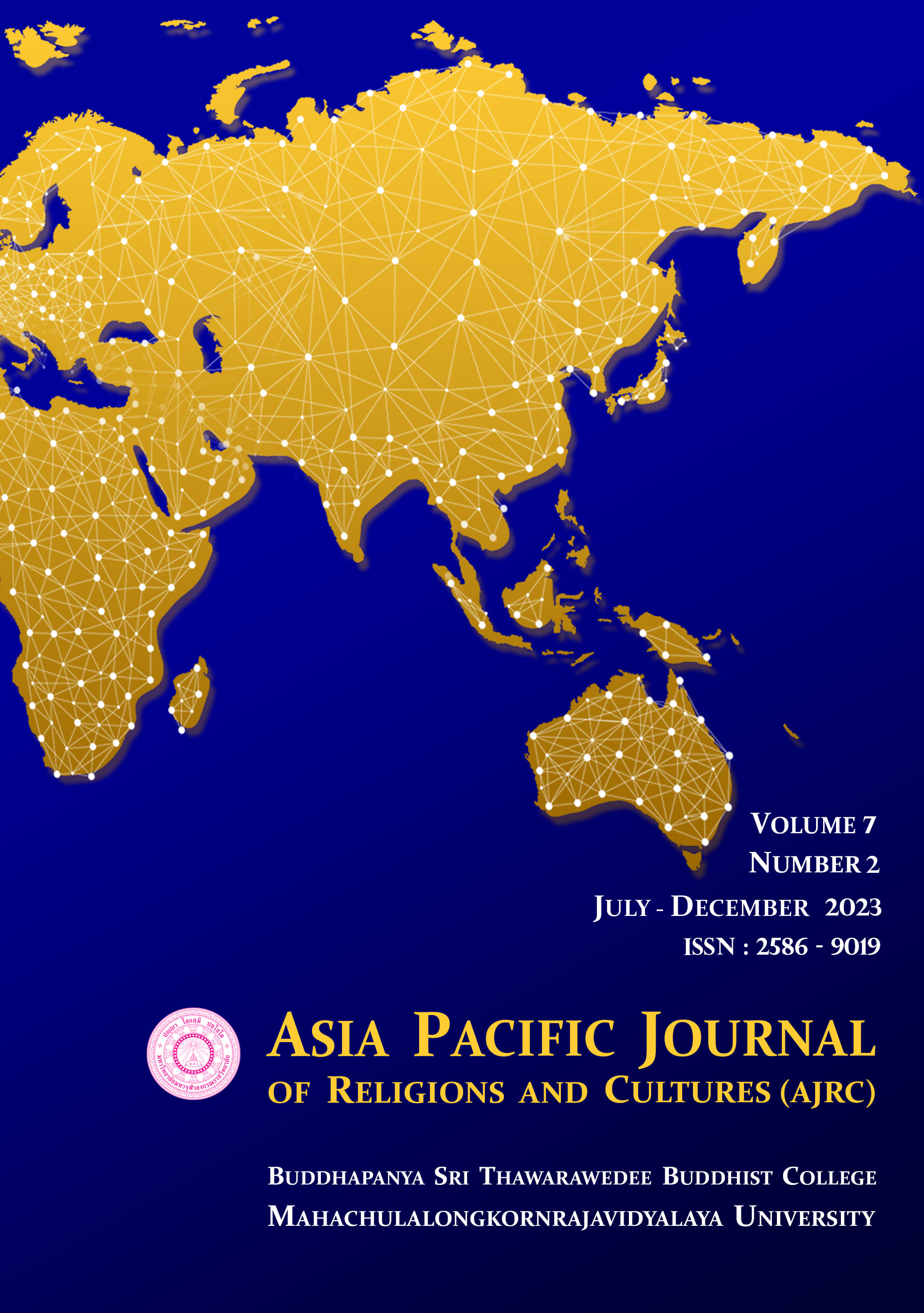A THE METHOD OF USING MEDICINAL PLANTS FOR HEALTH CARE ACCORDING TO THE BUDDHIST WAY OF COMMUNITY IN KHOK KET, PLAI PHONGPHANG SUB-DISTRICT, AMPHAWA DISTRICT, SAMUT SONGKHRAM PROVINCE
Main Article Content
Abstract
The research has there are 3 objectives: 1) to study how to use medicinal plants to care for the health of the Ban Khok Ket community, Plai Phong Phang Sub-district, Amphawa District, Samut Songkhram Province 2) to Analyze the methods of using medicinal plants to care for the health of the Ban Khok Ket community, Plai Phong Phang Sub-district, Amphawa District, Samut Songkhram Province 3) Study the application of Buddhist principles in the life of the Ban Khok Ket community, Plai Phong Phang Sub-district, Amphawa District, Samut Songkhram Province. The study used in-depth individual interviews, to gather information with key informants.
The results showed that: Herbs are very important, valuable, and beneficial to people's health. Nowadays, there are many diseases and illnesses affecting people. Herbal medicine is, therefore, one option. It is essential to health care. The use of medicinal herbs has been passed down since ancient times, according to the wisdom of local healers. How to use: Apply compresses to treat external symptoms, used to cure illnesses that occur, and use them to anoint the body to relieve symptoms of fever. Using herbal medicine in community culture is an important foundation for the mind, by bringing the principles of Buddhism into practice accordingly, bring benefits to society as a whole, including the principles of Buddhism, which are Dhamma and mutual support. It is a tool to help coordinate relationships and bonds. Many people live together happily and donate by giving material things to benefit others, speaking with sweet, sweet words, refraining from dishonest words, and being sincere with each other. Conducting oneself is beneficial to oneself and society, to act appropriately and be consistent in morality is to act in harmony with one another. The researcher selected a group of 20 people who provided important information about the Ban Khok Ket community. Tools were used to collect field data for the research. Types of travel into the area preliminary survey of area conditions, individual in-depth interviews, participatory observation forms, life history study record forms, and other equipment forms are used to check the accuracy and completeness of the data and analyze the content. It can be seen that herbal medicine is important. It is necessary for public health. When people have perfect physical and mental health, they can help their families and society as a whole progress efficiently.
Article Details

This work is licensed under a Creative Commons Attribution-NonCommercial-NoDerivatives 4.0 International License.
References
Royal Gazette, (1994). Divisions of Medical Practice, Office of the
Permanent Secretary, Ministry of Public Health Textbook of general traditional medicine in the field of pharmacy.
Busabong Phanchaeng, (2015). Folk medical knowledge and wisdom of local
people, Thepsadet Subdistrict, Doi Saket District. Chiang Mai Province. Maejo College University.
Phra Brahma Kunaporn (P.A. Payutto) (2003). Dictionary of Buddhist Science
Dhamma. compilation edition 12th printing.
Phra Malin Kittipalo, (1997). The importance of faith in the teaching of
Buddhism. Master of Arts thesis. Graduate School: Mahamakut Buddhist University.
Pisit Bunchai, (2002). Using local herbs in health care. Of the people of
Kaling, Sakon Nakhon Province, Thai vegetables and herbs nearby. (2008). ISBN 978-974-06-2787-6 Pimlak, Bangkok, 1st printing.
Patcharee Suwankerd, (2013). Behavior of consuming herbal water mixed
with aloe vera among college students. Master of Science, Faculty of Applied Statistics, National Institute of Development Administration.
Panuwat Suebnukarn, (2002). People's attitudes towards community forest
conservation. Alodon Forest is banned, Na Di Subdistrict, Mueang Surin District. Surin Province. Master's degree thesis. Bangkok Kasetsart University.
Yutthana Thongbunkua, (2008). Diversity and use of medicinal plants in
Tham Phet-Tham Thong Forest Park, Takhli District, Nakhon Sawan Province. Conservation Area Administration Office 12 Department of National Parks, Wildlife and Plant Conservation.
Royal Institute, (2011). Dictionary, Royal Institute Edition 2002. Bangkok:
Royal Institute.
Rujichan Wichiwaniwet, (2011). Development of a knowledge base system
for treating diseases with herbs. Under the Faculty of Science and Technology: Bangkok. Received a grant from Suan Sunandha Rajabhat University.
Phattira Sirimanont, (2008). “A study of faith in Buddhism and relationships
with peers of the elderly” Thesis for the M.Ed. Graduate School Srinakharinwirot University.
Waranee Pradit, Siriwadee Chomdej, and Korakot Nganwongphanit, (2014).
Thai herbs for treating osteoarthritis. Research work, Department of Biology Faculty of Science Department of Veterinary Biosciences and Veterinary Public Health Faculty of Veterinary Medicine Find Chiang Mai University.
Witthaya Pongamornkul and Santiwatthana, (2010). Flora of Thailand:
Medicinal plants, Botanical Garden Organization. Ministry of Natural Resources and Environment.
Atcharaporn Phothikhonyi, (2011). Conservation of Thai herbs Nong Mai
Kaen, Nong Lan Subdistrict, Tha Maka District, Kanchanaburi Province. Thesis, M.P.A. (Public Administration). Khon Kaen: College of Local Administration Khon Kaen University.


